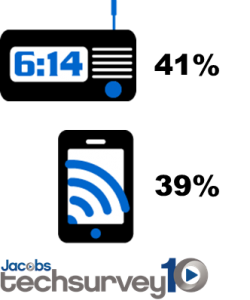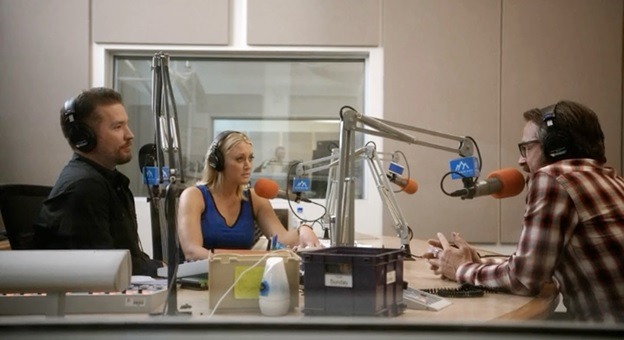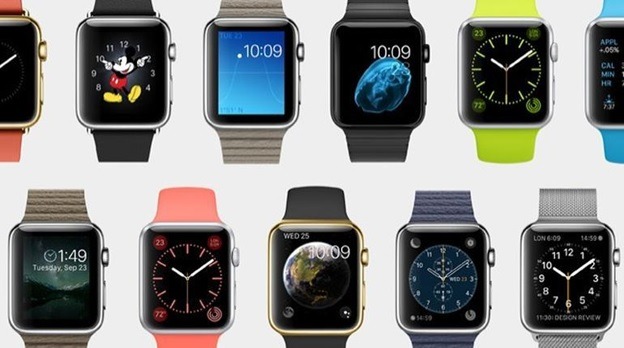As technology, media, and gadgets continue to change and become bigger parts of our lives and our businesses, the concept of time expands every day.
I remember walking into that very first radio production class at Michigan State many years ago. Instructor Jim Respress’ first words? “In radio, time is your biggest enemy.”
And we’ve been fighting the clock ever since. Whether it was learning how to backtime to hit the network news, draw up clocks, or adjust our brains to jobs that are truly 24/7, it has always been about time. Now the ways in which we deal with the concept of time in radio – and all of media – are undergoing change.
Time checks: Marc Maron’s TV show (“Maron” on IFC) explored some of the odd and antiquated things about broadcast radio in an episode called “Radio Cowboy.” As a guest on a fictionalized version of “The Heidi & Frank Show,” a debate about broadcasting versus podcasting breaks out. And then Maron goes off on a rave about radio’s traditional practice of giving out the time methodically and consistently:
Maron: “Why do you feel compelled to give out the time every five minutes? All cars have the time. All computer screens have the time on them. There are clocks everywhere! Yet, with OCD-like precision, you are compelled to always give out the time. It’s horrendous. “
LONG PAUSE
Frank: “It’s 8:25.”
That brief sequence says a lot about radio’s habitual practices that may have lost relevance as technology has changed over time.
Dayparts: Why the divisions and time slots throughout the day, as they have come down from on high – 6-10, 10-3, 3-7, 7-Mid? That may be the way they’ve traditionally been defined, first in the ratings, and then with air shifts and programs. But it’s not a reflection of how people live their lives. So why should radio stations be programmed this way?
Is it about time or is it about emotion?
Horizon Media asked those same questions in a research study recently conducted with consultancy Sparkler that talked to 2,000 respondents. Additionally, Bob Pittman, Tim Westergren, and others offered input as well. The radio study focused on the changing moods and attitudes of consumers throughout the day with the purpose of better serving commercials that match emotions on different stations at different times.
And of course, there are programming implications to this study and its direction, too. Just because air personalities come and go at the traditional times, a consumer’s day typically has much more complexity. That’s the “jobs to do” approach that we have talked about often in this blog – what is it that listeners are hiring our stations to do at various times of day – offer laughs, keep company, rock out, mood elevate – those are some of the various spectrums that are rarely considered during the design process.
Wake-ups: That brings us to a topic we investigated in last year’s Techsurvey10 – and again in the new study that will be presented in just a few weeks. When it comes to waking up,  what devices do people use to get their day going?
what devices do people use to get their day going?
We learned in 2014 that the clock radio barely edged out the mobile phone for wake-up duties. At last year’s wrap-up, we urged radio to more vigorously promote setting those clock radios to your station. And we also urged the industry to more aggressively build and market mobile apps with a built-in streaming alarm feature.
I’ve glimpsed at this year’s data, and it’s now a statistical “push” between the two devices. But if you’re programming a station with a younger audience target, the mobile phone rules as the wakeup gadget of choice.
This issue is critical to radio getting its morning shows going. People turning on their TVs as they get ready for work or school is one thing. Mobile phones becoming dominant in the bedroom is another. So mobile apps that include the ability to wake up to a stream become table stakes, and play a potentially important role in getting those meters humming and diaries being filled out.
Apple Watch – It won’t be long now before we finally get to see Apple’s entry into the smartwatch/wearables space. We reported the state of the art in smartwatches from CES in a January post. Many companies have been making these products for years, but there’s no mass market for them…yet.
The question is whether Apple’s smartwatch will change that. In both TS10 and TS11, we’ve asked about interest in these wearable devices, and it’s only fair, but not great. A lot of people are thinking they just don’t need another device in their lives. Of course, many people said that about the iPad, too.
An article in CNET gives you a pretty good idea of what we might expect from this device. It’s about time…and fitness, and music, and paying for stuff, and more.
Paul and I spoke to a number of smartwatch makers who were especially interested in Apple’s foray into this space. Again, the key will be whether Apple can make a smart timepiece stylish, useful, and fun. Based on the last 15 years, I wouldn’t count them out because Apple is a brand that consumers trust to make cool stuff. There’s a very good chance they will get this right?
So what impact will these smartwatches potentially have on broadcast radio? That is the question. How radio apps will fit into the Apple Watch ecosystem is something we’re especially looking forward to learning about. But based on what we saw – just like with the iPhone and IPad – radio has to find a way to play a role in this wearables revolution.
Time may be a constant, but the technology that is being built around timepieces and the way we now think about our time and how we use it is not stagnant – it’s very fluid.
Rethinking time – on-demand, waking up, the lifestyles of consumers throughout the day, and the coming smartwatch technology – is yet another way we need to reprogram our brains and our brands to stay relevant in this game.
Tick tock.
(BTW, the aforementioned episode of “Maron” is available on Netflix and is worth watching because it’s an existential debate about broadcast versus podcast. It stars Phil Hendrie – who’s amazing – along with appearances by Jim Ladd and Frazier Smith. It’s not an easy half hour to watch if you’re in radio, but the downsides of podcasting are explored, too. It is Season 2, Episode 10: “Radio Cowboy.” Thanks to Slacker’s Nicole Slater for bringing it to my attention.)
- What To Do If Your Radio Station Goes Through A Midlife Crisis - April 25, 2025
- A 2020 Lesson?It Could All Be Gone In A Flash - April 24, 2025
- How AI Can Give Radio Personalities More…PERSONALITY - April 23, 2025






On a somewhat related topic, as a listener I feel cheated when I hear a weather forecast that doesn’t include the current temperature. And as a broadcaster, I cringe when I hear a canned forecast end with “…and that’s a look at your weather.” Too picky?
You do get used to a certain cadence, style, and rhythm with information elements on the radio. It comes from the thousands of hours people spend listening, so all pretty understandable, Steve, to have those “things.”